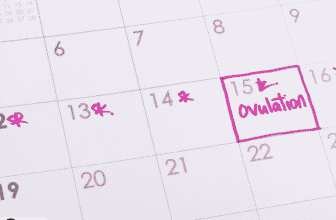
Ovulation test, You want to know when you need to have sex if you’re attempting to make a baby. You should take an ovulation test a few days before you expect to ovulate to help you predict when you’re most likely to become pregnant. Ovulation occurs in the middle of your menstrual cycle, which begins on the first day of your period and ends on the last day of your period. So when to take an ovulation test?
Related: Early pregnancy discharge in detail

extremely faint pregnancy test
Ovulation test
Women use an ovulation home test. It aids in determining when in the menstrual cycle a woman is most likely to become pregnant.
An increase in luteinizing hormone in the urine is detected by this test.
The ovary is signaled to release the egg when this hormone rises.
Women frequently utilize this at-home test to anticipate when an egg release is probable.
This is the most likely time for a pregnancy to occur. These kits are available in most drugstores.
At-home fertility monitoring are not the same as LH urine tests. Fertility monitors are digital portable devices that track your fertility.
They use electrolyte levels in saliva, LH levels in urine, or your basal body temperature to predict ovulation.
These devices are capable of storing ovulation data for multiple cycles.
You can get the product from amazon
Related: Pregnancy headaches causes and treatment
How the Test Is Conducted
The majority of ovulation prediction test kits contain five to seven sticks. To identify an increase in LH, you may need to test for several days.
The time of month you begin testing is determined on the length of your menstrual cycle.
If your regular cycle is 28 days, for example, you’ll need to start testing on day 11.
So, about 2 hours before the test, reduce your fluid consumption.
If your cycle interval is longer than 28 days, chat to your doctor about when the test should be done.
In general, you should start testing 3 to 5 days before your predicted ovulation date.
You’ll either have to urinate on the test stick or stick it into urine that has been collected in a sterile container.
If a surge is detected, the test stick will change color or display a positive sign.
A positive test indicates that you should ovulate within the next 24 to 36 hours, however this is not always the case.
The instructions for reading the results are supplied in the kit’s manual.
If you miss a day of testing, you can miss your surge.
If you have an irregular menstrual cycle, you may not be able to identify a surge.
Related: Glucose test pregnancy and its importance

dollar tree pregnancy test faint line pictures
When to take a home ovulation test kit?
There is no right or incorrect timing to test for ovulation.
Some women prefer to test their urine first thing in the morning, while others prefer to do so later in the day or evening.
Make sure to test at the same time every day, no matter what hour you choose.
Keep in mind that the amount of luteinizing hormone (LH) in your urine can be diluted by drinking liquid.
If this happens, it may appear that you are not ovulating when you are actually ovulating.
So, about 2 hours before the test, reduce your fluid consumption.
It’s also a good idea to wait 1 to 2 hours before the test to prevent urinating.
Related: Protein creatinine ratio pregnancy calculator and its usage
ovulation test

All in all, With such a little window of opportunity to conceive each month, using an ovulation test kit reduces the guesswork involved in estimating your most fertile days. This information might help you figure out what the optimal days are to have sex in order to enhance your chances of becoming pregnant.
References:







